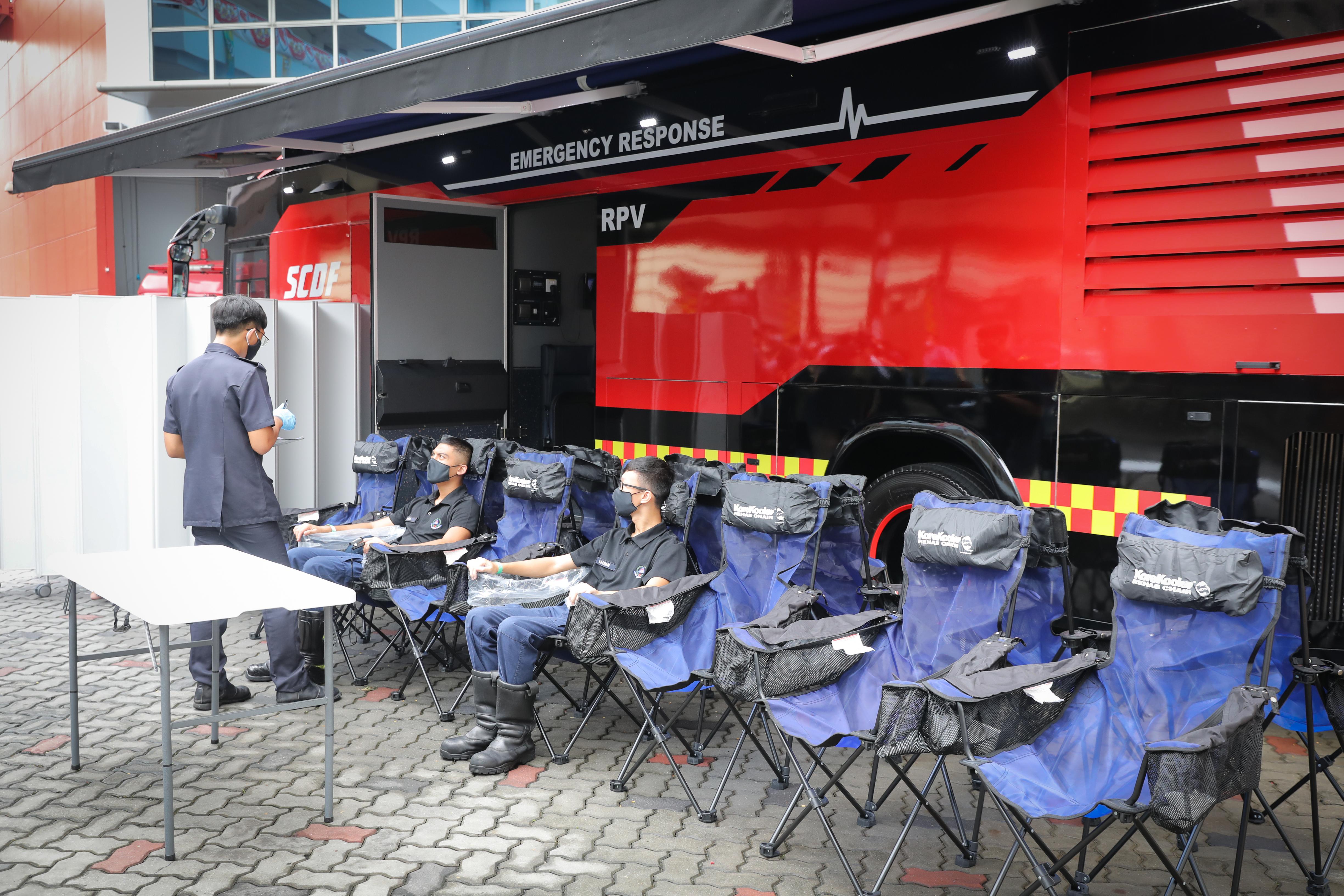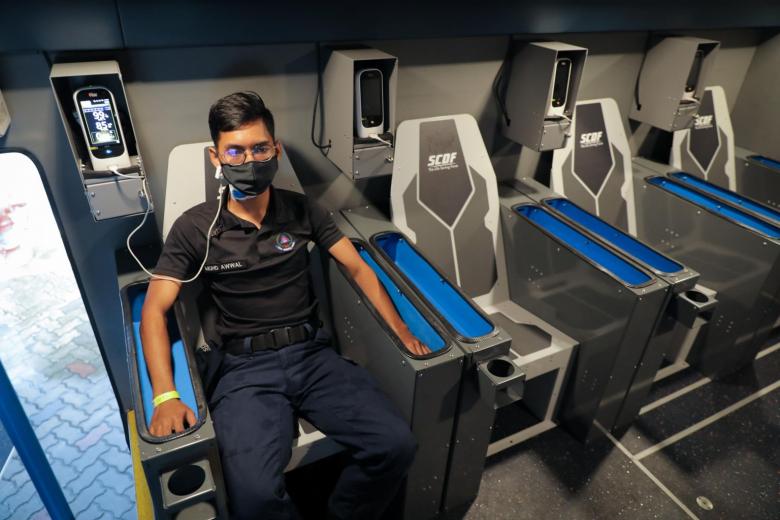SINGAPORE - Emergency responders during prolonged operations now have a rehabilitation area and can receive treatment for a range of heat injuries in a responders' performance vehicle (RPV).
The Singapore Civil Defence Force (SCDF) has added the RPV to its fleet of emergency vehicles to maximise the performance of responders.
The RPV is a collaboration among SCDF, medical doctors serving national service with SCDF, academic researchers from the Department of Physiology at the NUS Yong Loo Lin School of Medicine and local engineering company HOPE Technik.
Captain Edrick Lim, the RPV project officer at 4th SCDF Division, said: "During major incidents, SCDF emergency responders undergo multiple cycles of work and rest.
"Despite removing their personal protective equipment and resting at the rehabilitation area under cool shade during the rest cycle, SCDF responders' body temperature can exceed 39.5 deg C."
In the past, firefighters have been hospitalised for heat exhaustion during prolonged incidents.
The initial design and concept for the RPV started last year.
It was built on the earlier deployments and evaluation tests of the mobile body cooling unit, which featured retrofitted equipment for on-the-move treatment; and the responders' performance module, which had two zones of rapid cooling using a fan-cooling method and deep cooling using forearm immersion.
The RPV, which began operations earlier this month and takes 20 minutes to set up, serves as a mandatory triage point to assess responders when they exit from the operational area.
It features 28 portable forearm immersion chairs, eight deep cooling chairs and one automated cold water immersion.

SCDF responders will be moved to the rapid cooling zone for a 20-minute rest cycle if their body temperature is less than 37.9 deg C. The forearm immersion chairs allow them to dip their forearms into 15 deg C water.
If the responders' body temperature is between 37.9 deg C and 38.4 deg C, they will be moved to the deep cooling zone for 20 minutes.
This features forearm immersion chairs inside the RPV's air-conditioned environment, monitoring of their vital signs, and customisable ambient lighting to optimise their mental recuperation.
But if SCDF responders show symptoms of heatstroke or have a body temperature higher than 38.5 deg C, they will be assessed for heatstroke and, if needed, undergo cold water immersion. Then, they will be taken to the hospital.
The custom-built fibreglass tub submerges a responder in cold water for five minutes. Despite the heat emitted by the responder, the temperature regulation system ensures constant input of water under 5 deg C into the tub.
Directed jet streams also accelerate heat removal across the responder's body.
Said Colonel (Dr) Shalini Arulanandam, Chief Medical Officer, SCDF: "The RPV is believed to be the first of its kind in the world.
"It is purpose-built to provide gold standard on-site treatment for severe heat injury and also to improve our responders' recovery and quick redeployment when managing an incident."
SCDF is exploring plans for a second RPV to add to the one currently in operation.
SCDF will take into consideration its future training and operational needs, including the frequency of usage for the first RPV over the next few years.


